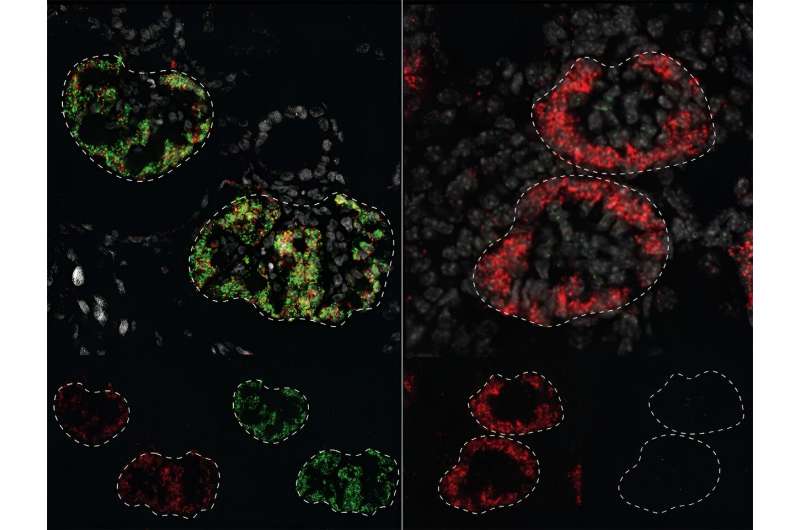This article has been reviewed according to Science X's editorial process and policies. Editors have highlighted the following attributes while ensuring the content's credibility:
fact-checked
peer-reviewed publication
trusted source
proofread
Study maps how genes instruct kidneys to develop differently in mice and humans

How similar is kidney development in humans and in the lab mice that form the foundation of basic medical research? In a study published in Developmental Cell, USC Stem Cell scientists probe this question by comparing the activity and regulation of the genes that drive kidney development in lab mice and humans.
"While we do have a lot in common with lab mice, our evolutionary paths diverged around 80 million years ago," said corresponding author Andy McMahon, director of the Eli and Edythe Broad Center for Regenerative Medicine and Stem Cell Research at USC, and W.M. Keck Provost and University Professor of Stem Cell Biology and Regenerative Medicine, and Biological Sciences.
"At the anatomical level, there are obvious differences in mouse and human kidneys in terms of the overall organ size, number of filtering units, and patterning of the ducts and lobes. We wanted to deepen our understanding of these fundamental differences to the level of the underlying genes and gene regulators that orchestrate kidney development."
To accomplish this, first author Sunghyun Kim in the McMahon lab worked with his colleagues to build atlases comparing gene activity and regulation in different cell types in developing mouse and human kidneys. The scientists could then pinpoint similarities and differences between the two species and identify cell type- and species-specific genetic and gene regulatory programs relevant to kidney development and disease.
Many genes, such as the one that encodes the molecule PCDH15, which helps cells adhere to each other, showed human-specific patterns of activity. These genes tended to be associated with cell interaction and migration, and might be necessary for building a complex, human-sized kidney during the relatively long period of embryonic development.
Other genes, including NTNG1, a gene normally associated with nerve cell development, may be used specifically in the human kidney to guide human developmental processes.
Many gene regulators were also human-specific. Some of these have been associated with chronic kidney disease or congenital anomalies of the kidney and urinary tract.
"By identifying human-specific gene regulatory regions, we were able to link these to regions previously associated with kidney disease, showing a potential for our research to provide clinical insight," said Kim, a recent Ph.D. graduate from USC currently pursuing postdoctoral studies at the Massachusetts General Hospital in Boston.
More information: Sunghyun Kim et al, Comparative single-cell analyses identify shared and divergent features of human and mouse kidney development, Developmental Cell (2024). DOI: 10.1016/j.devcel.2024.07.013
Journal information: Developmental Cell
Provided by University of Southern California

















